Avalanche Problem Types
 Loose Dry
Loose Dry
Release of dry unconsolidated snow. These avalanches typically occur within layers of soft snow near the surface of the snowpack. Loose-dry avalanches start at a point and entrain snow as they move downhill, forming a fan-shaped avalanche. Other names for loose-dry avalanches include point-release avalanches or sluffs. Loose-dry avalanches can trigger slab avalanches that break into deeper snow layers.
Loose Dry avalanches are usually relatively harmless to people. They can be hazardous if you are caught and carried into or over a terrain trap (e.g. gully, rocks, dense timber, cliff, crevasse) or down a long slope. Avoid traveling in or above terrain traps when Loose Dry avalanches are likely.
How they form
Loose Dry avalanches occur in either soft, powdery, storm-snow, or in old, weak, faceted snow. If the entire snowpack is faceted and sugary, loose dry avalanches can run to the ground.
Where they form
Loose Dry avalanches can exist throughout the terrain, on any aspect or elevation. They start on very steep slopes, usually 35 degrees or steeper. If they release on low-angle terrain, they are usually small slides that do not run very far.
Timing and Triggering
Most Loose Dry avalanches are a non-persistent problem and stabilize in hours or days. There tends to be a short period of frequent natural activity, which often occurs during intense snowfall or with the first sun/warming after a storm. However, human-triggering of loose dry avalanche may be possible any time the snowpack consists of unconsolidated faceted grains. Loose Dry avalanches release below the trigger point.
Recognition
Because it is a surface problem, it is easy to feel and recognize unconsolidated snow. Recent loose-snow avalanches are a good indicator. You may see sluffs or spindrift coming off your tracks or running on steep slopes.
Treatment and Avoidance
Loose Dry avalanches are fairly predictable and can be easily avoided. On large slopes, they can entrain a significant amount of snow and travel very fast. They are most dangerous when combined with terrain traps such as rocks, trees, cliffs, or a gulley. Avoid traveling under steep slopes during heavy snowfall or intense sunshine. Expert riders in very steep terrain can use sluff-management techniques.
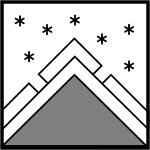 Storm Slab
Storm Slab
Release of a soft cohesive layer (a slab) of new snow that breaks within the storm snow or on the old snow surface. Storm-slab problems typically last between a few hours and few days. Storm-slabs that form over a persistent weak layer (surface hoar, depth hoar, or near-surface facets) may be termed Persistent Slabs or may develop into Persistent Slabs.
You can reduce your risk from Storm Slabs by waiting a day or two after a storm before venturing into steep terrain. Storm slabs are most dangerous on slopes with terrain traps, such as timber, gullies, over cliffs, or terrain features that make it difficult for a rider to escape off the side.
How they form
Storm Slabs form when new snow consolidates over a weaker layer or interface. The weak point can be snow that fell early in the storm or just a poor bond with the old snow surface. Like a chain, it can just be the weakest part of a snow layer that formed in a single storm or prolonged snowy period. Storm Slabs commonly form during periods of light or no wind.
Where they form
Storm Slabs tend to form in sheltered areas where new snow falls with light winds. They can occur on any steep open slope, and are often found on several aspects at the same time.
Timing and Triggering
Storm Slabs tend to have a short life span. They are easiest to trigger during periods of heavy snow and typically stabilize within a day or two after the storm cycle has ended.
Recognition
Storm Slabs can be difficult to recognize since the surface snow is often soft and powdery. With enough cohesion in the new snow, these slabs can propagate shooting cracks and faint collapses at the interface of the new snow and old snow surface. Snowpack tests that load the snow from above (e.g. Compression Test) have limited utility since they often crush through storm slabs and buried weak layers, and do not identify the problem well. Tilt tests, ski cut results on small inconsequential slopes, or natural activity on indicator slopes are often the best clues that a Storm Slab problem exists.
Treatment and Avoidance
Storm Slabs are most dangerous when they run into terrain traps such as timber, gullies, over cliffs, or areas difficult for a rider to escape off to the flank. Due to the nature of the soft, low-density slab, riders may not realize that a Storm Slab has failed until well after it is running. It is common to underestimate the extent of propagation with soft Storm Slabs, and resulting avalanches are often larger than expected. You can reduce your risk from Storm Slabs by waiting a day or two after a storm before venturing into steep avalanche terrain. They usually stabilize in less than a week, so you can reduce your risk by waiting several days after a big loading event.
Experienced riders can use slope cuts as a tool to help release a Storm Slab. Under most conditions, good planning will allow a group to recognize terrain traps as well as good escape routes prior to a triggered a Storm Slab. However, Storm Slabs, can trigger avalanches into deeper, old-snow layers. This scenario can lead to a much larger and more dangerous avalanche.
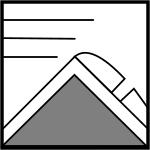 Wind Slab
Wind Slab
Release of a cohesive layer of snow (a slab) formed by the wind. Wind typically transports snow from the upwind sides of terrain features and deposits snow on the downwind side. Wind slabs are often smooth and rounded and sometimes sound hollow, and can range from soft to hard. Wind slabs that form over a persistent weak layer (surface hoar, depth hoar, or near-surface facets) may be termed Persistent Slabs or may develop into Persistent Slabs.
Wind Slabs form in specific areas, and are confined to lee and cross-loaded terrain features. They can be avoided by sticking to sheltered or wind-scoured areas.
How they form
Snow begins to drift when wind speeds reach about 10 mph. The wind scours snow from the windward side of terrain features such as ridges, open bowls and gullies. The snow is broken into smaller fragments and deposited on the on the downwind, or lee, side of the terrain features. The deposited snow can form thick, cohesive slabs. The stronger the wind the harder the Wind Slab.
Where they form
Wind Slabs form in specific areas depending on the wind speed and direction. They form on the lee aspects of ridgelines, cross-loaded gullies, or other terrain features. Areas around cliff bands and the lee side of krumholtz groves can also develop Wind Slabs. At stronger wind speeds, unusual loading/deposition patterns may occur. As wind speeds increase, the Wind Slabs may form further down slope than normally suspected, and may be found in small pockets in steep gullies or even down in the trees.
Timing and Triggering
Wind Slabs are most reactive during a wind event and the first day or two after it has ended. Wind Slabs can have a longer lifespan than Storm Slabs. During periods of very cold temperatures and extended wind events, Wind Slabs can persist for around a week. Wind slabs that form over a persistent weak layer like surface hoar, depth hoar, or near-surface facets may develop into Persistent Slabs.
Recognition
Look for convex pillows of wind-drifted snow on the lee side of ridges and other terrain features. The Wind Slab may have a chalky look and feel. Wind Slabs can be very hard, and may present a hollow drum like sound as you traverse across slope. Snowpack tests conducted in wind-loaded areas may reveal a Wind Slab problem in the upper few feet of the snowpack.
Treatment and Avoidance
Wind Slabs are common across Colorado. They are confined to lee and cross-loaded terrain features and can be avoided by sticking to sheltered or wind-scoured areas. Wind Slabs form in specific areas, so learning to recognize their characteristic shape and texture will help you avoid them. They usually stabilize in less than a week, so you can reduce your risk by waiting several days after a big loading event
 Persistent Slab
Persistent Slab
Release of a cohesive layer of soft to hard snow (a slab) in the middle to upper snowpack, when the bond to an underlying persistent weak layer breaks. Persistent layers include: surface hoar, depth hoar, near-surface facets, or faceted snow. Persistent weak layers can continue to produce avalanches for days, weeks or even months, making them especially dangerous and tricky. As additional snow and wind events build a thicker slab on top of the persistent weak layer, this avalanche problem may develop into a Deep Persistent Slab.
The best ways to manage the risk from Persistent Slabs is to make conservative terrain choices. They can be triggered by light loads and weeks after the last storm. The slabs often propagate in surprising and unpredictable ways. This makes this problem difficult to predict and manage and requires a wide safety buffer to handle the uncertainty.
How they form
Persistent Slabs form when a persistent weak layer is buried by additional layers of snow. The problem persists after storm and wind slab instabilities have stabilized. The persistent weak layer can cycle through periods of sensitivity from reactive to nonreactive due to changes in weather conditions such as new precipitation, wind loading, strong solar radiation, and/or rapid changes in air temperature.
Where they form
The spatial distribution of Persistent Slabs is dictated by the distribution of the culprit weak layer. The weak layer distribution is dictated by the weather patterns responsible for its creation. Thus, Persistent Slab distribution can range from widespread across terrain to very specific terrain features. They can occur at all elevations and on all aspects. Persistent Slabs can be triggered remotely, and on low-angle to steep slopes. Consult the backcountry avalanche forecast to determine where in the terrain this problem exists.
Timing and Triggering
Persistent Slabs can be a problem during any time of the snowy season. Anytime you have a slab resting over a reactive persistent weak layer, you have a Persistent Slab problem. This problem can develop during the fall and last well into the spring.
Recognition
Persistent Slabs can be distinguished from Storm and Wind Slabs by how the fracture lines fail in the terrain. Unlike storm instabilities, Persistent Slabs are commonly triggered remotely, from flat areas, and failures can propagate across terrain features like ridges, ribs, and gullies. It is possible to have a Persistent Slab problem that is susceptible to human triggering but not produce many spontaneous avalanches. The lack of avalanche activity does not always indicate the absence of a Persistent Slab problem. You can look for persistent weak layers in snow profiles, and perform snowpack tests to gauge sensitivity and distribution of a Persistent Slab problem. Consult the backcountry avalanche forecast to determine where in the terrain this problem exists.
Treatment and Avoidance
Persistent Slabs can be triggered by light loads and weeks after the last storm. They are commonly trigged remotely and they often propagate across and beyond terrain features that would otherwise confine wind and storm slabs. Failures often propagate in surprising and unpredictable ways. This makes this problem difficult to predict and manage and requires a wide safety buffer to handle the uncertainty. Intimate slope-scale knowledge and tracking of culprit persistent weak layers and avalanche activity over space and time will aid in assessing the severity and extent of this problem. The best ways to manage the risk from Persistent Slabs is to make conservative terrain choices.
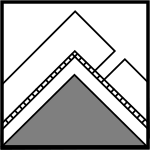 Deep Persistent Slab
Deep Persistent Slab
Release of a thick cohesive layer of hard snow (a slab), when the bond breaks between the slab and an underlying persistent weak layer, deep in the snowpack or near the ground. The most common persistent weak layers involved in deep, persistent slabs are depth hoar or facets surrounding a deeply buried crust. Deep Persistent Slabs are typically hard to trigger, are very destructive and dangerous due to the large mass of snow involved, and can persist for months once developed. They are often triggered from areas where the snow is shallow and weak, and are particularly difficult to forecast for and manage. They commonly develop when Persistent Slabs become more deeply buried over time.
Deep Persistent Slabs are destructive and deadly events that can take months to stabilize. You can trigger them from well down in the avalanche path, and after dozens of tracks have crossed the slope.
How they form
Deep Persistent Slabs form when a persistent weak layer is deeply buried under a thick hard slab of snow created by numerous storm events. This problem commonly develops when an early season persistent weak layer like depth hoar or crust-facet combinations become more deeply buried over time.
Where they form
The spatial distribution of Deep Persistent Slabs (like Persistent Slabs) is dictated by the distribution of the thick slabs and the culprit weak layer. The slab and weak layer distribution are dictated by the weather patterns responsible for their creation. Thus, Deep Persistent Slab distribution can range from widespread across terrain to specific terrain features, but are confined to areas with a deep snowpack. They can occur at all elevations and on all aspects, and can be triggered on low-angle to steep slopes. Consult the backcountry avalanche forecast to determine where in the terrain this problem exists.
Timing and Triggering
Deep Persistent Slabs can be a problem during any time of the snowy season but the most common period is mid-winter through spring since it takes some time to develop a thick slab via multiple snow events. The problem takes weeks to months to develop, and can then persist for weeks or months.
Recognition
Unfortunately, there is often little direct evidence of a Deep Persistent Slab problem until a large destructive avalanche releases. The lack of avalanche activity even with dozens of tracks on a slope does not indicate the absence of a Deep Persistent Slab problem. Observing deeply buried weak layers in snow profiles, and gauging sensitivity with appropriate deep layer snowpack tests like Deep Tap Tests and Propagation Saw Tests can be helpful in assessing the presence of this problem.
Treatment and Avoidance
Deep Persistent Slabs are very difficult to predict and manage. They are low-probability high-consequence events. If you are caught in one, you are unlikely to survive. Often the only evidence of the problem arrives too late as a large, deadly, and unexpected avalanche. The only real effective risk management strategy is to avoid areas where you suspect a Deep Persistent Slab. They are most commonly triggered from shallow spots in the snowpack. Avoiding these areas is one way to reduce risk. Give yourself a wide safety buffer to handle the uncertainty, potentially for the remainder of the season.
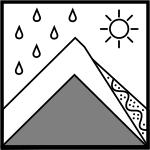 Loose Wet
Loose Wet
Release of wet unconsolidated snow or slush. These avalanches typically occur within layers of wet snow near the surface of the snowpack, but they may quickly gouge into lower snowpack layers. Like Loose Dry Avalanches, they start at a point and entrain snow as they move downhill, forming a fan-shaped avalanche. They generally move slowly, but can contain enough mass to cause significant damage to trees, cars or buildings. Other names for loose-wet avalanches include point-release avalanches or sluffs. Loose Wet avalanches can trigger slab avalanches that break into deeper snow layers.
Travel when the snow surface is colder and stronger. Plan your trips to avoid crossing on or under very steep slopes in the afternoon. Move to colder, shadier slopes once the snow surface turns slushly. Avoid steep, sunlit slopes above terrain traps, cliffs areas and long sustained steep pitches.
How they form
Loose Wet avalanches form in new snow or old surface snow that is warming. Warming temperatures, strong solar radiation, or rain-on-snow make the surface snow damp or wet. As the water content increases, the snow becomes unconsolidated. They start at a point and entrain additional snow as they move down hill, and have a characteristic fan-like shape.
Where they form
Loose Wet avalanches form at or near the snowpack surface. Like Loose Dry avalanches, most Loose Wet avalanches start on very steep slopes. If a Loose Wet avalanche entrains a very large amount of snow, it can run long distances on low-angled terrain. They can form on any aspect. Because they are often associated with solar radiation, they are most common on sun-exposed slopes.
Timing and Triggering
In Colorado, Loose Wet avalanches are most likely in the late winter and early spring. Loose Wet avalanches are usually problematic for a period of hours at a time. There may be a daily cycle, as the sun warms the snow surface and makes Loose Wet avalanches more likely. The potential for Loose Wet avalanches can increase rapidly. Because they are often associated with solar radiation, the aspects where Loose Wet avalanches are likely can change through the day as the sun moves east to west.
Recognition
There are many clues that Loose Wet avalanches are likely. Monitor the snowpack surface for a layer of wet, slushy snow more than several inches deep. Water may be visible between the ice grains. On small, very steep test slopes, the surface layers will slide easily. Fresh roller balls–little snowballs–falling off trees and cliff bands indicate that the snowpack surface is getting weak.
Treatment and Avoidance
Avoid steep, sunlit slopes above terrain traps, cliffs areas and long sustained steep pitches. Sluff management in extreme terrain is an effective technique for skilled riders. Travel when the snow surface is colder and stronger. Plan your trips to avoid crossing on or under very steep slopes in the afternoon. Monitor the snowpack surface, and move to colder, shadier slopes once the slush layers form
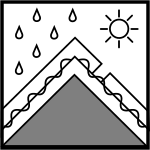 Wet Slab
Wet Slab
Release of a cohesive layer of snow (a slab) that is generally moist or wet when the flow of liquid water weakens the bond between the slab and the surface below (snow or ground). They often occur during prolonged warming events and/or rain-on-snow events. Wet Slabs can be very destructive.
Avoid terrain where and when you suspect Wet Slab avalanche activity. Give yourself a wide safety buffer to handle the uncertainty.
How they form
Liquid water, from snowmelt or rain-on-snow, moves through the layers of the snowpack at different rates. Wet Slab avalanches happen when a weak layer or interface becomes moist, wet, or saturated. The wet snow loses strength, and the snow above fails and avalanches. Wet Slabs fail because of a decrease in layer strength, compared to dry avalanches that often fail because of an increase in load.
Where they form
Wet Slabs often occur first at lower elevations and areas with a shallower snowpack. Facets and depth hoar layers are especially weak when wetted. After several nights of above-freezing temperatures, wet slabs can occur on many aspects.
Timing and Triggering
In most climates, Wet Slabs are spring-time events. This is when temperatures are warm and snowmelt produces sufficient free water to lubricate the snowpack. Earlier in the spring, the avalanche pattern can be cyclical, occurring in the afternoon or evening hours as melt-water accumulates, and decreasing in the morning as the snowpack cools. Later in the spring, extended periods of above-freezing weather contribute to the problem. The cyclical pattern decreases and it is possible for wet slab activity to occur at any time. In Colorado, one of the indicators of Wet Slab avalanches is two or three nights where temperatures do not drop below freezing.
Recognition
Snowballing, pinwheels, and small Wet Slabs indicate the potential for larger Wet Slabs. Recent Wet Slab avalanches indicate the type of terrain another cycle will occur on, if similar conditions recur. Temperature data from remote weather stations can be useful to monitor overnight temperatures, watching for the periods of little or no overnight freeze.
Treatment and Avoidance
In many cases, snow conditions are poor when Wet Slabs are a significant problem. Most people leave the mountains or find places with firmer, less slushy snow and away from the slopes where Wet Slabs are a problem. Recognizing the weather factors that lead to Wet Slabs will help you avoid them. When solar radiation is a primary factor, carefully selecting and moving aspects through the day can be effective. Avoid terrain where and when you suspect Wet Slab avalanches. Give yourself a wide safety buffer to handle the uncertainty
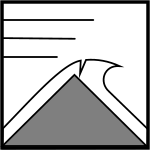 Cornice Fall
Cornice Fall
Cornice Fall is the release of an overhanging mass of snow that forms as the wind moves snow over a sharp terrain feature, such as a ridge, and deposits snow on the downwind (leeward) side. Cornices range in size from small wind lips of soft snow to large overhangs of hard snow that are 30 feet (10 meters) or taller. They can break off the terrain suddenly and pull back onto the ridge top and catch people by surprise even on the flat ground above the slope. Even small cornices can have enough mass to be destructive and deadly. Cornice Fall can entrain loose surface snow or trigger slab avalanches.
Cornices can never be trusted and avoiding them is necessary for safe backcountry travel. Stay well back from ridge line areas with cornices. They often overhang the ridge edge can be triggered remotely. Avoid areas underneath cornices. Even small Cornice Fall can trigger a larger avalanche and large Cornice Fall can easily crush a human. Periods of significant temperature warm-up are times to be particularly aware.
How they form
Cornices develop whenever snow is available for transport and the wind is sufficiently strong to move the snow. The ideal wind speed for cornice development is 15 to 25 mph. Stronger wind speeds tend to move snow further down slope, which creates other hazards (see Wind Slab, Persistent Slab). Cornices can form quickly with favorable wind speeds and abundant available snow, typically following a recent storm. Multiple wind events over time generate large overhanging cornices comprised of numerous hard snow layers often interspersed with soft weak snow layers or hollow tunnels.
Where they form
Cornices form on the downwind (leeward) side of sharp terrain features. Ridges above treeline are the most common locations. Cornices also form downwind of vertical ridge lines and tops of couloirs, in a process referred to as cross-loading. The largest Cornices form over time in areas that receive persistent wind from a similar wind direction. A common example is an above treeline saddle that funnels persistent winds, resulting in a Cornice that increases in size through the winter season. In Colorado, high elevation winds typically blow from southwest through northwest; and hence, large Cornices are more likely to form on the easterly side of terrain features.
Timing and Triggering
Cornices develop in periods ranging anywhere from hours to all season. A brief wind event following storm snow quickly generates soft cornices on the lee of any terrain feature. Soft wind cornices are easy to trigger artificially. If they are not large, then they are often manageable by themselves. Soft Cornice Fall, however, can run long and fast while quickly entraining additional snow that results in a much larger and dangerous avalanche. A longer wind event, typically lasting at least a day, generates larger and harder Cornices. These stiff Cornices may appear supportive of a human, but they cannot be trusted. Additional weight, from more snow load or a human, can result in a crack that easily propagates resulting in a Cornice Fall. This can happen from a distance resulting in a remote release. Cornices can build to very large sizes through the winter. These large Cornice Falls are difficult to trigger, but if they do, the consequences can be deadly.
Recognition
Fortunately, Cornices are easy to see. Weather and terrain awareness are the best tools for recognizing potential cornice problems. When planning a backcountry trip, use topographic maps to learn where potentially hazardous cornices can form. Pay attention to weather observations during the past several days and wind forecasts to understand where Cornices are forming. While in the backcountry, look for cornice formation on the lee of terrain features. Look for local terrain-driven wind effects, which may generate Cornices in unexpected locations. Pay attention to unusual weather events. For example, winds from the east (often associated with a Front Range upslope storm) generate Cornices on westerly aspects.
Treatment and Avoidance
Cornices can never be trusted; and hence, avoiding them is necessary for safe backcountry travel. While moving along ridge lines stay well back from areas with cornice formation. Cornices often overhang the ridge edge and added weight can release the cornice, often from a remote distance. If necessary, use a probe pole to determine the existence of hard ground underneath the snow. Avoid areas underneath Cornices. Even small Cornice Fall can trigger a larger avalanche that runs far downhill. Large Cornice Fall can easily crush and kill a human. The spring season, or any period of significant temperature warm-up, are times to be particularly aware. Large Cornice Falls are most common during these weather regimes.
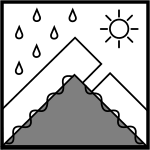 Glide
Glide
Release of the entire snow cover as a result of gliding over the ground. Glide avalanches can be composed of wet, moist, or almost entirely dry snow. They typically occur in very specific paths, where the slope is steep enough and the ground surface is relatively smooth. The are often proceeded by full depth cracks (glide cracks), though the time between the appearance of a crack and an avalanche can vary between seconds and months. Glide avalanches are unlikely to be triggered by a person, are nearly impossible to forecast, and thus pose a hazard that is extremely difficult to manage.
Predicting the release of Glide Avalanches is very challenging. Because Glide Avalanches only occur on very specific slopes, safe travel relies on identifying and avoiding those slopes. Glide cracks are a significant indicator, as are recent Glide Avalanches.
How they form
Free water collects along the ground surface and lubricates the snowpack. The water can come from snowmelt or rainfall. As the water pools and reduces the friction holding the snowpack to the underlying surface. Wet snow is more viscous than dry snow, so a wet slab deforms and “flows” downhill easier. Glide is usually a slow process occurring over several days or weeks, but occasionally happens much faster. If the gliding snowpack breaks free of the surrounding snow it can avalanche. Glide cracks may open up in the snowpack, but do not necessarily indicate an avalanche is imminent.
Where they form
Glide Avalanches occur on smooth slopes. Grassy slopes, rock faces, and glacial ice or firn are common surfaces. The free water can spread evenly, and it is easy for the water to drown surface roughness. Very rough surfaces tend to channel water, rather than allowing it to spread out, and have very high friction. Glide cracks often form where the ground surface changes from rough to smooth, and on convex rolls with a smooth surface. Glide Avalanches tend to happen on specific slopes.
Timing and Triggering
Glide Avalanches require free water in the snowpack. In a continental snowpack, most free water comes from melting in the spring. Glide Avalanches tend to be late spring events in Colorado.
Glide Avalanche release is challenging to predict. Surface conditions are not a good indicator, because it can take hours or days for free water to run through the snowpack and pool on the ground. Several days of warm temperatures can make glide avalanches more likely, but the avalanches sometimes release after the temperatures cool, but free water continues to run through the snowpack.
Recognition
Glide cracks are an indication that glide avalanches are possible. The cracks point to slopes with sufficient smoothness. Because the gliding occurs at the ground surface, the rate is hard to observe. There is not a direct correlation between weather events and Glide Avalanches, so those factors are not useful predictors.
Treatment and Avoidance
Predicting the release of Glide Avalanches is very challenging. Because Glide Avalanches only occur on very specific slopes, safe travel relies on identifying and avoiding those slopes. Glide cracks are a significant indicator, as are recent Glide Avalanches.
Knowledge of the ground surface can be helpful. You can visit favorite areas in the summer and look for smooth grassy slopes and rock faces. Some of those slopes can be identified from air photos or satellite imagery.
